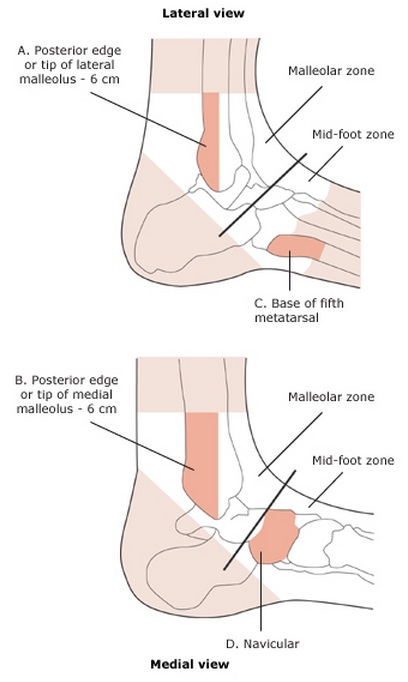Ottawa ankle rules: Difference between revisions
Ostermayer (talk | contribs) |
Ostermayer (talk | contribs) (→Source) |
||
| Line 30: | Line 30: | ||
==Source== | ==Source== | ||
<references/> | <references/> | ||
*Blackham JEJ, Claridge T, Benger JR (2008). "Can patients apply the Ottawa ankle rules to themselves?". Emergency Medicine J 25 (11): 750–751 | |||
[[Category:Ortho]] | [[Category:Ortho]] | ||
Revision as of 22:25, 23 April 2014
Ankle[1][2]
- X-ray is only required if there is pain in the malleolar zone AND any of these findings:
- Bony tenderness along the posterior edge or distal 6cm of either malleolus
- Inability to bear weight for at least two steps with each foot immediately after the injury AND at the time of evaluation
Foot
- X-ray is only required if there is pain in midfoot zone AND any of these findings:
- Bony tenderness over the navicular bone
- Bony tenderness over base of the 5th metatarsal
- Inability to bear weight for at least two steps with each foot immediately after the injury AND at the time of evaluation
Exceptions
- ?age <18 or >55
- Study of 1500 patients age 1-15 showed a sensitivity of 98%^
- Only for blunt trauma mechanism
- Does not apply to subacute/chronic injuries
- Does not apply to injuries of the hindfoot or forefoot
Imaging
See Also
http://www.ncbi.nlm.nih.gov/pubmed/18955612
Source
- Blackham JEJ, Claridge T, Benger JR (2008). "Can patients apply the Ottawa ankle rules to themselves?". Emergency Medicine J 25 (11): 750–751



